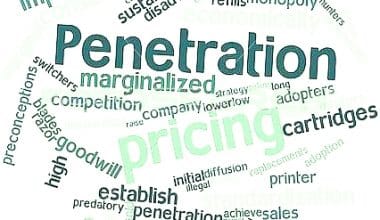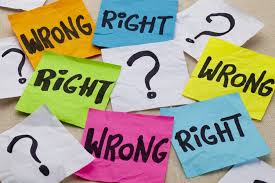Every Tom, Dick, and Harry will all retire at some point, as long as there is life. For this reason, you should plan ahead and save money so that you can live out and enjoy that phase of your life. To do these things well, you need to make plans for when you retire. Today, I’ll give you the facts on the best early retirement strategies.
Understanding Retirement
The decision to end one’s active employment at a given moment in time is referred to as retirement. The typical retirement age in the United States and other industrialized nations is 65 years old, and many of these nations have pension or benefits plans to help retirees with their finances.
One of the most critical tasks in developing a savings strategy is determining how much money you’ll require in retirement. A mortgage or rent payment is an example of an outlay that must be accounted for. Most people require 80% of their pre-retirement income to maintain their current standard of living.
Planning for retirement is vital if you want to maintain or increase your present standard of living after you retire. Let’s look at retirement planning and what it requires.
Retirement Planning
Setting a target for how much money you want to have in retirement and finding out how to get there is what retirement planning entails. Part of planning for retirement is getting a job, figuring out how much money you’ll need, starting a savings plan, and taking care of your assets and risks. To find out if the retirement income you want can be reached, you need to project future cash flows.
Saving for retirement needs commitment because even a small amount saved each month can quickly add up.
Retirement strategies
Here is a list of early retirement strategies to implement:
#1. Long Retirement Budget:
According to research, half of the individuals who retire at 65 will have to make major lifestyle changes, whereas only 15% of those who retire at 70 will have to do the same. That is the power of long retirement and receiving Social Security payments for a longer period of time.
#2. Select the most appropriate retirement plan for you
Even if there is no such thing as a “perfect” retirement plan, you may undoubtedly choose a retirement account or a combination of accounts that works best for you. The best programs will almost always contain tax incentives and, if possible, a matching contribution or some other means to promote saving. Often, a 401(k) plan with a work match is the best place to begin.
#3. Create an IRA
If you don’t have access to a workplace plan (or if the plan your company offers doesn’t include a match), or if you already have a 401(k) and want to maximize your contributions, an Individual Retirement Account (IRA) is an excellent method to prepare for retirement.
#4. Set aside money for major expenses
Cutting back on present expenditures to save for retirement is a huge step toward a comfortable future.
You may have heard that giving up your morning cappuccino will help you become a millionaire. In the long run, every dollar counts, but the three main portions of the ordinary American’s budget (housing, transportation, and food) are the ones that actually matter.
#5. Maintain Up-to-Date Estate Plans
A well-rounded retirement plan should contain both a comprehensive financial strategy and meticulous estate planning. This necessitates the assistance of specialists in a variety of professions, such as lawyers and accountants.
Purchasing life insurance is an important component of planning for your retirement and your estate. You need a sound estate plan and enough life insurance to ensure that your family is financially secure when you die. A well-thought-out strategy also allows you to avoid the time-consuming and costly probate process.
Investment in retirement strategies
Different “categories” or “asset types” of investments are available. It can be classified into three major sorts of assets: stocks, bonds and money, and other liquid assets.
Taking them one after the other
- Stocks: Investing a large portion of your savings in stocks is risky since stock prices fluctuate more frequently than bond yields. However, there is still a chance that the stock market can rise further, and younger investors will have more time to recover from losses.
- Bonds: Bonds are a type of debt security that can be given out by both private companies and government agencies. Bond buyers have to put up an initial amount of money, called the principal. On the bond’s maturity date, which is also its expiration date, investors get back the money they put into the bond. In exchange, the organization that gives out the bonds usually gives the bondholders interest payments at regular intervals at a set rate.
Small Business Owner Retirement Strategies
As a small business owner, you should consider Safe Harbor 401(k) plan,
A Safe Harbor 401(k) may be the greatest option for small business owners when it comes to retirement plans. This plan is comparable to a 401(k), with the exception that the company must contribute to it, and employees must earn their vesting contributions. You can avoid conducting yearly nondiscrimination testing as a plan administrator if you provide at least the required amount.
Also, a basic Individual Retirement Account (IRA) is one of the most straightforward ways for a business owner to save for retirement. You can allocate your contributions to a variety of investments, including equities, mutual funds, ETFs, bonds, CDs, and money market funds.
Best Retirement Strategies
- Conventional pensions: The typical pension is a sort of defined benefit (DB) plan that is simple to administer for employees. A pension is a retirement payment that is paid out on a regular basis, beginning when the employee retires. The pension is fully funded by the employer. Nonetheless, DB plans are becoming increasingly scarce, and they are on the verge of extinction.
- IRA accounts: Individual Retirement Accounts (IRAs) are a popular retirement plan in the United States (IRA). Traditional IRAs, Roth IRAs, spousal IRAs, rollover IRAs, SEP IRAs, and SIMPLE IRAs are some of the several types of IRAs.
Early Retirement Strategies
#1. How much money do I need for retirement
Many people (wrongfully) begin their retirement planning by attempting to calculate a number. If you wish to retire early, the first step is to calculate how much money you will need to spend each month.
The first stage is to calculate the costs of housing, food, clothing, utilities, transportation, insurance, and medical care.
To have adequate money for the rest of your life, you should save at least 25-30 times your annual expenses.
#2. Make the Most of Your Retirement Accounts
Regardless of when you intend to retire, the earlier you begin saving, and the more frequently you save, the better. Individual Retirement Accounts (IRAs) and 401(k)s are two excellent retirement accounts for this purpose.
While you are still working, save as much as you can for retirement. Contributions to a traditional IRA are tax deductible in the year made, and gains grow tax-free during retirement. Withdrawals, on the other hand, are liable to income tax in the year they are made.
#3. Boost and diversify your income streams
After you’ve saved as many costs as possible, you should focus on increasing your earnings. You can save and earn more money when you have more money flowing in. First and foremost, you should strive to improve your current position. Second, you should launch a secondary hustle.
#4. You should have a plan for saving money every day, week, month, and year
You can divide all of your financial goals into daily targets and use Personal Capital to track your net worth, and make daily transfers into your investing accounts. Our minds were designed to allow us to live in the present; we require this to keep track of time and be in check.
#5 Seek the Advice of a Financial Expert
Working with a financial expert can help you boost your chances of attaining your retirement goals through wise investing. They can also specify the monthly contribution required to achieve the target within a specific time range.
Your advisor can help you handle several sources of income to ensure that your retirement savings last as long as feasible. Dividends, required minimum distributions (RMDs), Social Security, defined benefit plans, and real estate investments are all potential sources of income.
Which Is the Biggest Expense for Most Retirees?
Housing is still the most expensive item for most retirees. This expense category contains the following items:
- Transportation
- Health care
- Repairs
- Insurance
- Utility/bills.
What Does the Average Retiree Live on per Month?
The average monthly retirement expenditure is $4,074, a little over $3,800 monthly. We derived our figure from the fact that the average American aged 65 to 74 spends $48,885 per year.
How Do You Know It’s Time to Retire?
- You’re currently in poor health: If you notice a decline in your physical or mental health, you should retire.
- If you are financially stable: You may have enough money to retire comfortably but are afraid to quit your job. However, if you have enough money in the bank to live comfortably in retirement, it may not make sense to stick around. You don’t want your money to last longer than you do.
- When you.ve lost interest: When you no longer have any connection to your work, it’s a big sign that it’s time to retire. However, recognizing this can be tough for people who have worked their way up the corporate ladder and value being recognized for their efforts.
What Is the Average Savings for a 60-Year-Old?
The Federal Reserve thinks that people between the ages of 55 and 64 will need a little more than $408,000.
But according to a Vanguard survey, People between the ages of 55 and 64 typically have a nest egg of $256,000. However, this also applies to the wealthy. Assuming a range of incomes from $0 to $100,000, the median is around $9,000.
According to the SSA, the average monthly benefit is $1,550.48 as of October 2022. This sum, This amount, however, varies greatly depending on the type of recipient. In fact, retirees often earn more than the general population.
What Is the 4 Rule for Retirement?
In the 1990s, financial planner Bill Bengen devised the “4% rule” as a simple approach to ensure that a person’s retirement funds would be sufficient to pay their living expenses for the rest of their lives.
Moreso, the 4% Rule estimates how much money retirees should withdraw from their investments each year. The rule was enacted to ensure a stable flow of funds and a healthy financial cushion in the coming years.
Additionally, the 4% rule for retirement enables you to withdraw 4% of your savings without fear of running out of money in your first year of retirement. This sum will need to be increased in the future to allow for inflation.
What Are the 5 Phases of Retirement?
#1. 5 to 15 years Before Retirement:
Persons in this stage begin making plans and preparing for retirement as their retirement age approaches. Even while 44% of respondents claim they are “on track” in terms of overall retirement planning, many nevertheless feel behind.
#2. The happy Bliss stage:
The stress of the day will dissipate now that your work is over, and you can relax. At this point in retirement, nothing beats the thrill of finding something new. This condition can last anywhere from a few weeks to a few years.
You can finally start living your life, and the new opportunities may even make you feel like you’re on vacation for a while. A chance to unwind, rejuvenate, and do anything you want without having to answer to anyone.
#3. The Disillusionment Period:
At this stage, you might feel like you’re just going through the motions. Even if you have a lot on your plate, you may feel bored, restless, and unsatisfied.
Many of us look forward to retirement and spend a lot of time fantasizing about how wonderful it will be. However, getting there, we may discover that it is not as interesting as we anticipated. Many people may feel isolated, bored, and without a sense of purpose.
#4. Getting back on your feet and rediscovering yourself:
A chance to discover who you truly are and what you want out of life. People’s jobs are often a big part of how they see themselves, so when they retire, they may feel like they’ve lost a part of who they are.
You can examine your life and make changes as part of the reorientation process. You must do a lot of soul-searching to figure out what you truly want out of life. Getting back on your feet might be an excellent moment to reflect on yourself.
#5. Stability And Reconciling:
This final stage may not begin for up to 15 years after retirement begins.
At this point, retirees have settled into a fulfilling lifestyle that involves a diverse range of enjoyable activities. They attempt to keep things basic and straightforward. You’ve finally grown used to your new life and are content with it in this final stage of retirement. If you have recently discovered a new sense of purpose and identity, you may have already established your new way of life.
What Is the 3 Bucket Strategy for Retirement?
- Funds set aside for unanticipated expenses and other liquid assets
- Mid-term and
- Long-term needs
What Is the 5% Retirement Rule?
The 5% rule includes the following:
#1. Keep your retirement savings in check
Most people’s retirement funds will be the most money they’ve ever had. This amount of money should last you for a long time, if not your entire life.
This plan calls for a smaller initial withdrawal, rising to a target of 3.13 percent per year at age 65. This figure rises gradually, reaching 15.87% for people who make it to age 100 or beyond.
#2. Don’t forget to make your minimum distributions
Unless you have a Roth IRA, you have to start taking minimum distributions from your retirement accounts.
Divide the balance of your retirement account by the distribution period stated next to your age in the RMD table to determine how much to withdraw.
#3. Strategically Plan Your Social Security Benefits
If you want to get the most from Social Security, you should start getting payments when you reach your full retirement age (FRA), which is either 66 or 67 years old right now.
If possible, strive to extend your Social Security eligibility beyond your FRA. When you reach the age of 70, you will begin getting 124% of your scheduled benefit if your FRA is 67 and 132% if it is 66.
#4. Consider Creating A Health Care Strategy
Before you retire, you should consider how much money you’ll need for health care. Healthcare costs are difficult to budget for, but smart planning can assist. Chronic health problems and the care they require are more expensive. Consider wounds caused by accidents as well.
#5. Prioritize your health and happiness
Set goals to keep you engaged and active as you enjoy your retirement. Regular exercise is essential for your bones and muscles, but socializing is equally crucial for your mental health. It is entirely up to you what you do in your spare time. You may work, volunteer, pursue a hobby, and so on.
Read “LIFE INSURANCE RETIREMENT PLAN LIRP: How It Works“ and learn more
Bottom Line
Keep your retirement savings in check. Most people’s retirement savings will be their most significant single investment. With this much money, you should be able to live comfortably for many years, if not your entire life. Following the above strategies, be sure to maximize your retirement early.
Retirement Strategies FAQs
What is the 4 rule for retirement?
The “4% rule” is a simple approach to ensure that a person’s retirement funds would be sufficient to pay their living expenses for the rest of their lives.
What are the best retirement stategies?
The best retirement strategies, among others, include:
- Traditional pensions and IRA accounts.






